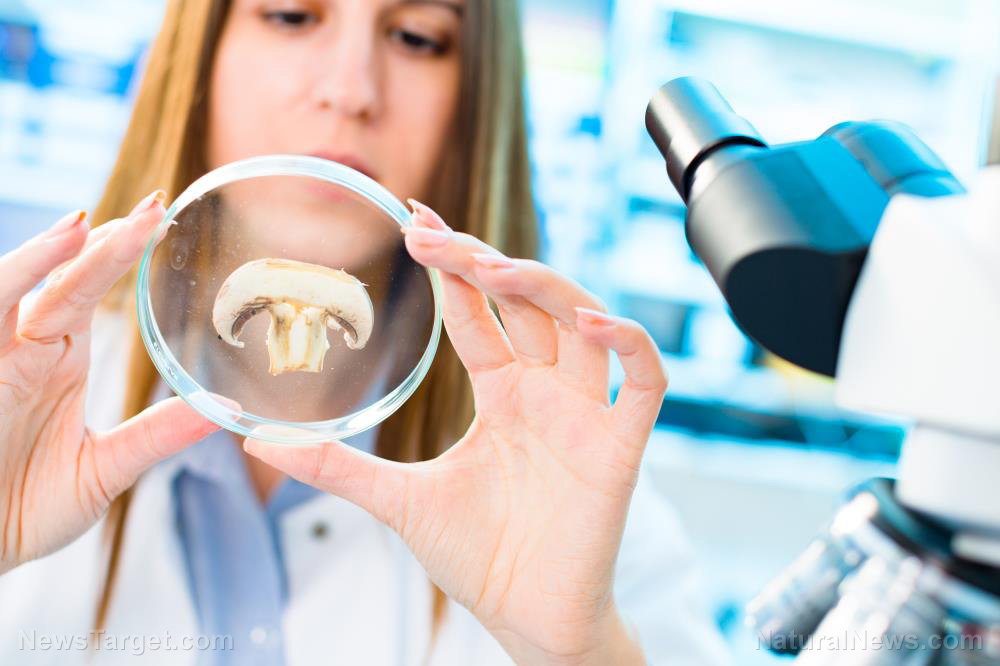Are you aware that you’re inhaling toxic chemicals when you wear a face mask?
08/15/2024 / By Olivia Cook

Wearing face masks has become a global norm following the onset of the Wuhan coronavirus (COVID-19) pandemic, with many governments around the world often mandating these coverings for people in public.
But recent research reveals concerning findings about their safety. Masks, especially surgical and reusable FFF types have been found to emit potentially harmful chemical compounds.
A study published in Ecotoxicology and Environmental Safety in April 2024 highlighted that masks could release up to almost 5,400 microplastic particles in 24 hours, with surgical masks emitting more than 3,150 microfibers in under an hour.
Researchers from Germany and Switzerland reviewed 24 studies, involving more than 630 masks, including cloth, N95 and surgical varieties. They discovered that 63 percent of the masks released alarming amounts of microplastics and nanoplastics, organophosphate esters and polycyclic aromatic hydrocarbons compared to other mask types. (Related: N95 masks expose wearers to dangerous levels of toxic cancer- and seizure-causing compounds, study finds.)
Meanwhile, surgical masks were linked to higher emissions of heavy metals, phthalates and volatile organic compounds (VOCs) similar to textile masks. Some of the detected substances, such as per- and polyfluoroalkyl substances (PFAS), titanium dioxide (TiO2) and VOCs, were found to exceed safe exposure limits.
A 2022 study published in Nature also raised concerns about TiO2, a potential carcinogen, urging stricter regulations.
Study finds plasticizers, heavy metals, PFAS and VOCs in face masks
A recent study published in Environment International examined four types of face masks to identify the presence of 31 plasticizers and to assess how much of these compounds could be inhaled during use.
Plasticizers are plastic-derived substances added to materials during the manufacturing process to make them softer and more flexible.
Although all mask types had similar overall plasticizer levels, the study found that surgical and FFF2 masks commonly used in Europe have the highest plasticizer release rates at almost four percent and nearly five percent, respectively.
The Environmental and Water Chemistry for Human Health group conducted the research at the Institute of Environmental Assessment and Water Research in Barcelona, Spain. The researchers highlighted that most face masks are made from synthetic materials, like polypropylene, polystyrene terephthalate and polyester, with plasticizers added to enhance fire resistance, flexibility and softness. Heavy metals, PFAS and VOCs were found in others.
To simulate real-life mask use, the researchers conducted inhalation experiments using paper mache dummy heads. Higher temperatures – resembling human breath – led to increased release of plastic additives. Release rates varied significantly, ranging from 0.1 percent to 95 percent, depending on the compound and mask type. Notably, organophosphate esters and phthalates showed average release rates of 1.0 percent and 1.2 percent, respectively.
Surgical and FFF2 masks had the highest overall release rates, while reusable masks showed the lowest at 0.6 percent. N95 masks had a 1.2 percent release rate. One concerning finding was a surgical mask that released 95 percent of a compound called acetyl tributyl citrate, a potential endocrine disruptor.
While the released plasticizer levels remained below established safety thresholds, the researchers emphasized that face masks represent an additional exposure pathway.
The study warns that even at low levels, exposure to plasticizers poses genotoxic (DNA damage), immunotoxic (affects the immune system) and teratogenic (causes birth defects) risks, especially for vulnerable groups, such as children and pregnant women. Additionally, plasticizers have been linked to declining sperm counts and potential fertility issues, raising concerns about their impact on future generations.
Watch the following video showing how disposable surgical face masks are made of synthetic fibers that can enter the body.
This video is from the Daily Videos channel on Brighteon.com.
More related stories:
Face masks did NOTHING to stop people from getting sick during COVID, study finds.
COVID-19 masks provided NO PROTECTDION during “pandemic,” British government now admits.
STUDY: Disposable COVID-19 masks expose wearers to high levels of toxic compounds linked to cancer.
STUDY: COVID face masks contain dangerous levels of titanium dioxide that are easily inhaled.
STUDY: Masks are exposing children to a horrifying array of deadly pathogens.
Sources include:
Submit a correction >>
Tagged Under:
covid-19, discoveries, face masks, health science, mask mandates, medical fascism, Medical Tyranny, pandemic, plasticizers, poison, real investigations, research, toxic chemicals, toxic ingredients, toxins
This article may contain statements that reflect the opinion of the author
RECENT NEWS & ARTICLES
HealthScience.News is a fact-based public education website published by Health Science News Features, LLC.
All content copyright © 2018 by Health Science News Features, LLC.
Contact Us with Tips or Corrections
All trademarks, registered trademarks and servicemarks mentioned on this site are the property of their respective owners.




















